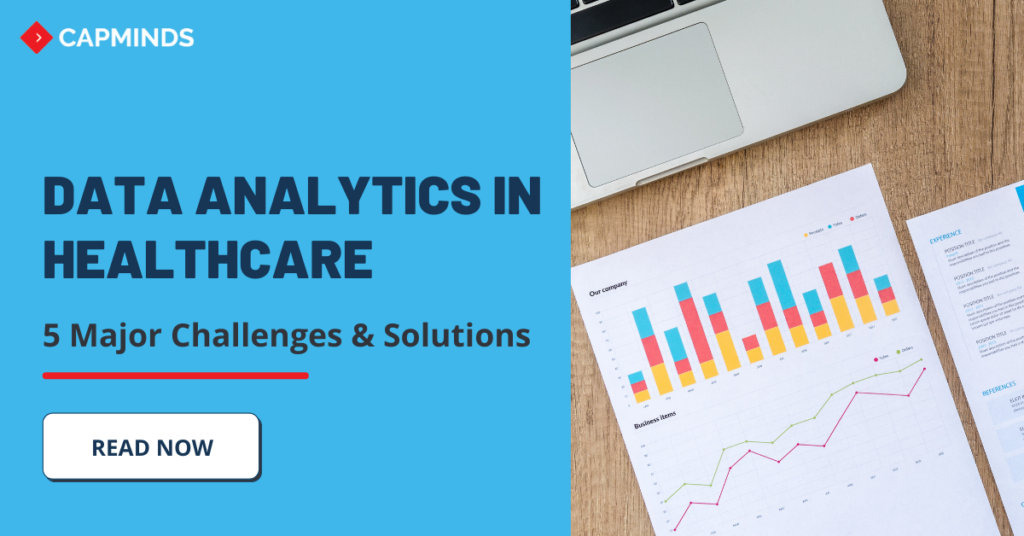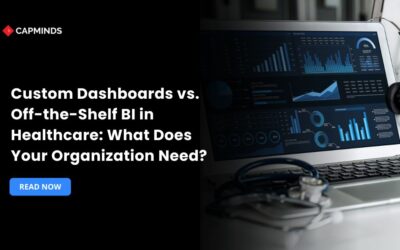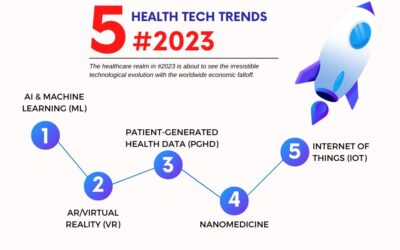Data Analytics In Healthcare: 5 Major Challenges & Solutions
In today’s digital world, the healthcare providers have become more familiar with the notion that data analytics can help them a lot to drive informed clinical decision making. But nowadays organisations are also struggling to implement the best tools that will allow them to truly succeed with health management.
Need to improve the quality of your patient care? Data analytics is one of the first things you should consider. In this article, we discussed the top 5 major challenges with healthcare data analytics and the right solutions to overcome it quickly.
Top 5 Healthcare Data Analytics Challenges
1. Capturing Accurate Data
In a study at an ophthalmology clinic, EHR data matched patient-reported data in 23.5 percent of records. When patients reported having three or more eye health symptoms, their EHR data disagreed by any means.
Health care data is assembled from various sources and in different formats, such as structured data, photographs, videos, paper, digital, multimedia, and so on. Capturing data that is clean, accurate, comprehensive, and formatted precisely for use in numerous frameworks is a real challenge for organizations.
Providers, public health specialists, employers, payers, social network communities, and patients collect data, but there is no effort to bind together the data. This results in an inaccurate understanding of a patient’s well-being journey.
The Right Solution
Predictive analytics can create patient journey dashboards and disease trajectories that can lead to effective, and result-driven healthcare. It improves treatment delivery, cuts costs, improves efficiencies, and so on. To achieve this, make sure you have access to clean, scaled, formatted, and quality data from external as well as internal resources. Providers can improve their data capture schedules by organizing important data types for their specific projects to ensure that data is meaningful for downstream analytics.
2. Fragmented Patient Care
As we mentioned above that most of the data received from various sources is unstructured and undiscovered, making EHR systems more ingenious and interoperable is another challenge. It’s pivotal to secure the information of patients, staff, billing, and performance.
About 80% of all serious medical errors involve miscommunication during care transitions (to different care settings).
For some datasets, for example, updates on patients’ vital signs may occur at regular intervals. Other data, for example, place of residence or marital status, may just change a couple of times during a person’s whole lifetime. Providers must have a clear perspective that which data needs a manual update, and which one needs an automatic update, to avoid downtime of end-users and harming the quality of the dataset.
Understanding the unpredictability of data, or how frequently it changes, can be problematic for organizations that do not monitor their data assets consistently. Make sure you aren’t creating superfluous duplicate records while updating information, which may make it hard for clinicians to access important data for patient-centric decisions.
RELATED: #1 GUIDE TO PREDICTIVE ANALYTICS IN HEALTHCARE
The Right Solution
To drive reliable experiences, AI and ML algorithms need credible information without duplications and mistakes. This helps specialists to get real-time predicted data that seems relevant to the patient’s health history. And, based on that the right treatment is prescribed to them.
Hence, HCOs should exclude data governance and master data management solutions to enhance data quality. They should develop multidisciplinary groups that separate the shackles debilitating the healthcare services, processes, and clinicians.
3. Data Privacy & Security
From phishing assaults to malware to laptops coincidentally left in a cab or somewhere, healthcare data was exposed to vulnerabilities many times.
HIPAA indicates almost 18 components of PHI that must be ensured. The main challenge is to eliminate these core PHI components by still making data valuable for analysis. The HIPAA Security Rule incorporates a list of specialized security for organizations storing protected health information (PHI), including authentication protocols, transmission security, controls over access, auditing, and so on.
Many organizations secure their data with security procedures such as up-to-date antivirus, encrypting sensitive data, multi-factor authentication, but even the most secured data can be taken down due to complicated constraints on their access to data or software.
The Right Solution
Cloud data lakes are easy ways for healthcare organizations to run analytics against data from various sources. The HIPAA even notices a few security, which organizations must follow to guarantee privacy & security. An appropriate equilibrium is required between addressing data privacy and using patient data for creation examination.
4. Data Visualization
These days data often needs to be visually presented in the form of interactive graphs or charts to be impactful and understood. And, we know it’s quite frustrating and time-consuming to drag information from multiple areas and put it into a reporting tool. Thus, clean and engaging data visualization can make it much easier for a provider to absorb information and use it appropriately.
Color coding is the popular data viz strategy that normally delivers a prompt reaction – for example, red, yellow, and green are all around comprehended as stop, alert, and go.
What most of the health organizations are missing is considering good data presentation practices, such as interactive dashboards with charts that use appropriate proportions to show contrasting figures, and correct labeling of information to reduce potential disarray. Complicated flowcharts with overlapped text and low-quality graphics can frustrate and annoy beneficiaries, leading them to ignore or misinterpret data.
The Right Solution
Data visualization acquires the main takeaways in the health industry into focus, helps to identify patterns as well as correlations, and makes data analysis more relevant. For example, data visualizations include interactive infographic dashboards, bar charts, pie charts, heat maps, and histograms, all of which have their particular uses to represent ideas and data.
RELATED: PREDICTIVE ANALYTICS IN HEALTHCARE: BENEFITS & USE CASES
5. Document Processing and Analysis
While many organizations are comfortable with on-premise data storage, which guarantees control over security, access, and up-time, but, they find it expensive to maintain, and are inclined to produce data silos across various departments
Clinical documents — from healthcare administrative data to patient records with prescriptions — often have a complicated language that takes time to analyze and process. It’s quite challenging to manage such documents like capturing, tracking, and storing for example PDFs, word files, and digital images of paper-based content. So, it’s challenging to develop a platform to process clinical documents without any error.
The Right Solution
Digital document management helps organizations save time and money. It provides document security, access control, audit trails, centralized storage, and organized search with a solution. Emerging ML or AI-based techniques are assisting HCOs in processing data.
For example, natural language processing (NLP) creates new documents that help to jot down a clinical visit summary or dictate clinical notes via speech recognition for relevant information. The interconnected system helps physicians or staff to save detailed information of patients with no human error.
Final Thoughts
The future of data analytics in healthcare is bright. All you need to do is to take care of the challenges while leveraging data analytics and how you overcome them. As a result, you’ll experience better practice growth by providing quality care to your patients.
At CapMinds, we successfully implement cloud-based EHR, RCM, telehealth, and other advanced health IT solutions for hospitals, clinics, and health centers to help them deliver quality healthcare to their patients and ultimately improve the practice workflow process.




